Reprinted with permission from Kunkel & Son Fine Woodworking, a company producing architectural woodwork in Nashville, TN.
Compound curves are among the most difficult tasks in the woodworking field. This is a description of how we proceed in the layout and making of curved handrail sections. Obviously it doesn’t include everything, we think it might help those woodworkers who are experienced enough to take this kind of project on. Note: the form we use is on the center line of the stair radius and its incline describes the “run and rise” of the staircase. Its width is that of the steel channel that the railing will sit on.
A spiral is not a simple curve, it is actually a twisted curve (as you will see later). This particular handrail is going to measure 2 1/4" wide, by 2 5/8" tall. Since it is a twisted curve, it needs to come out of 16/4 (4 inch thick) mahogany.
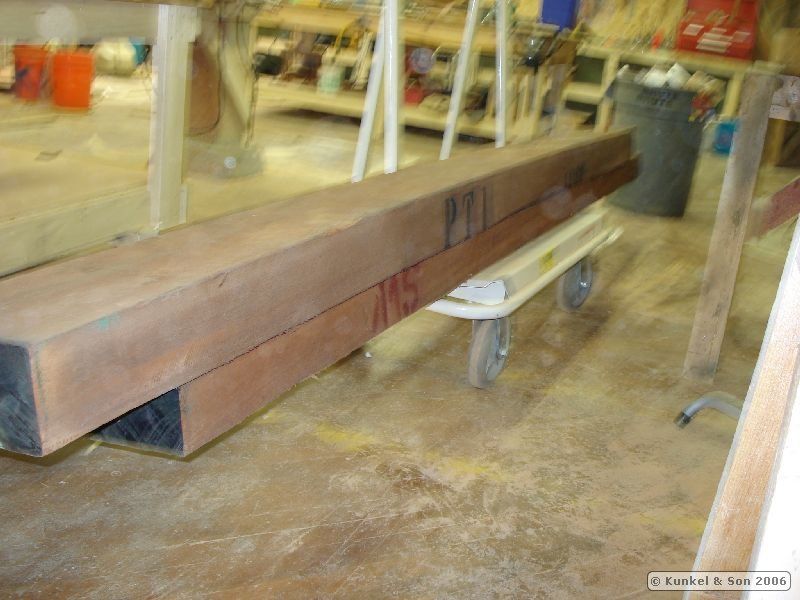
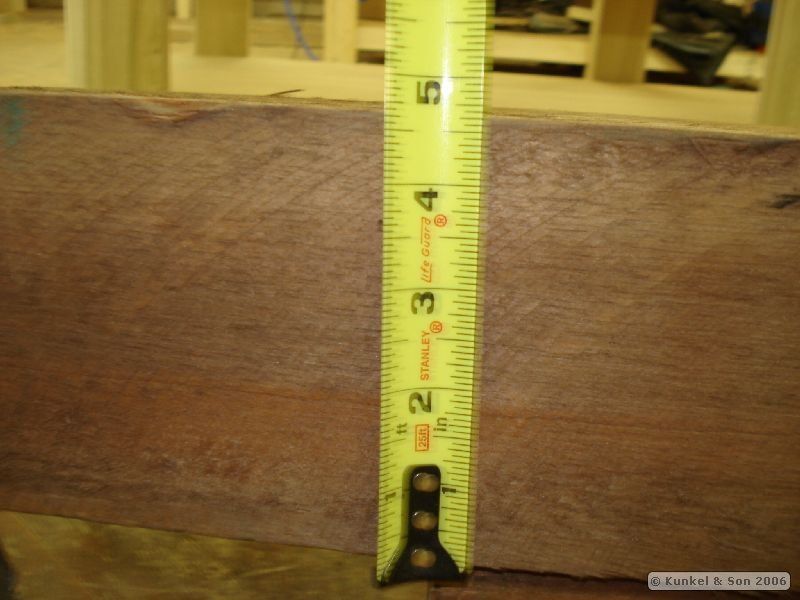
We first mark the oversized curves and cut them out on the bandsaw. This blank is oversized to allow for the twist in the curve.
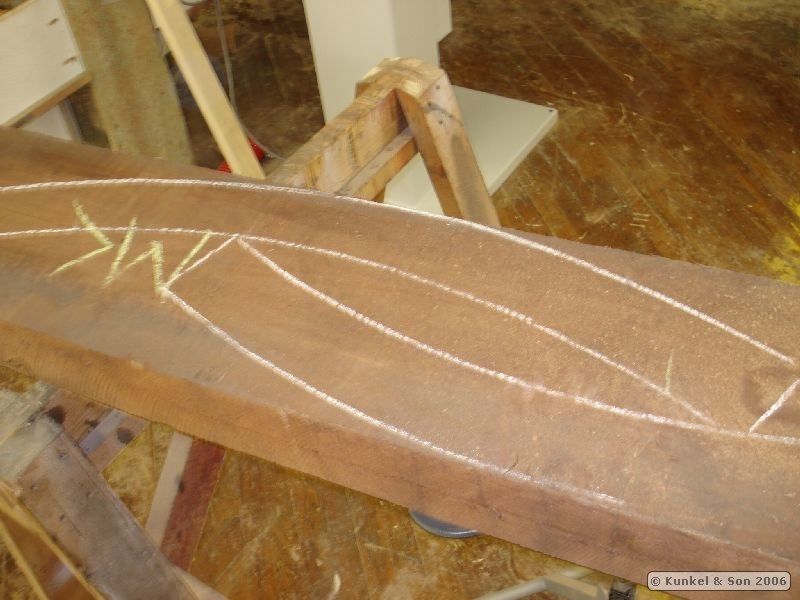
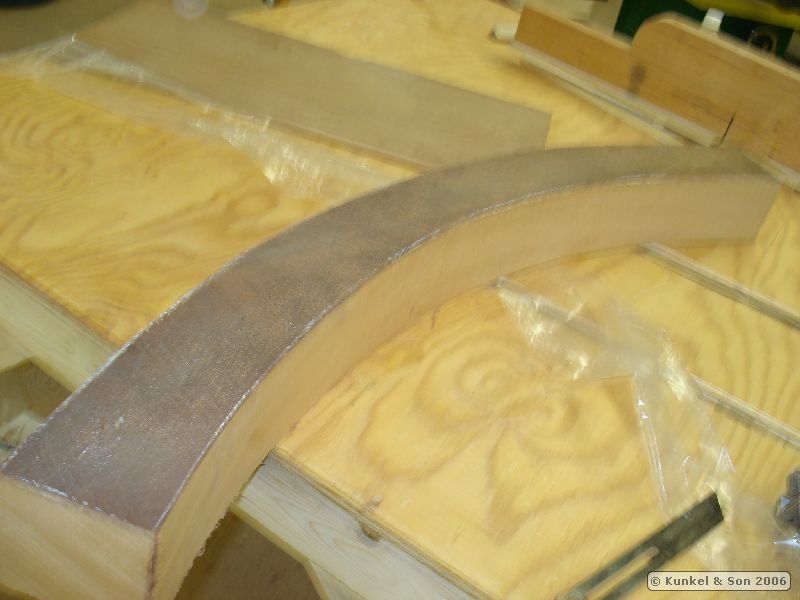
Next, we place the curve on a form (a mockup of the real staircase) and mark on the ends, to a level line, where the finished curve will be. Then, using a template, we mark the top and bottom curves by matching up to the corners drawn on the ends.
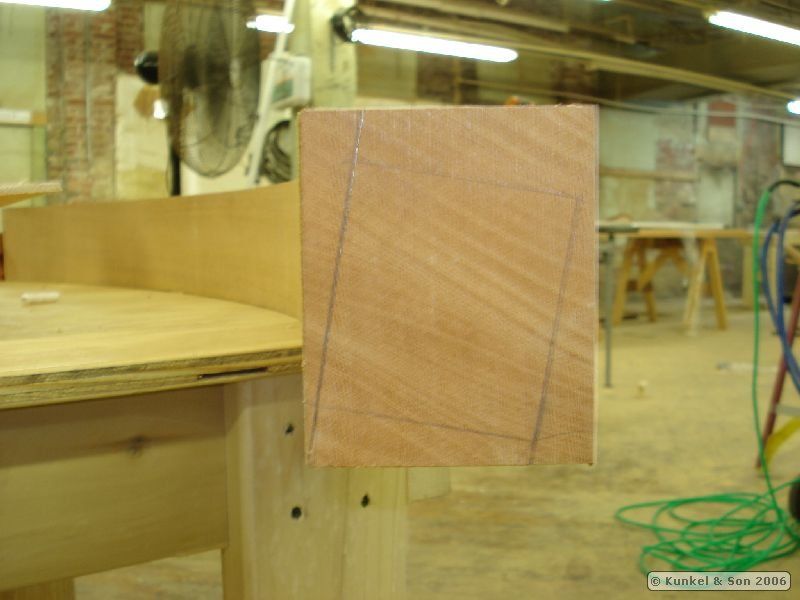
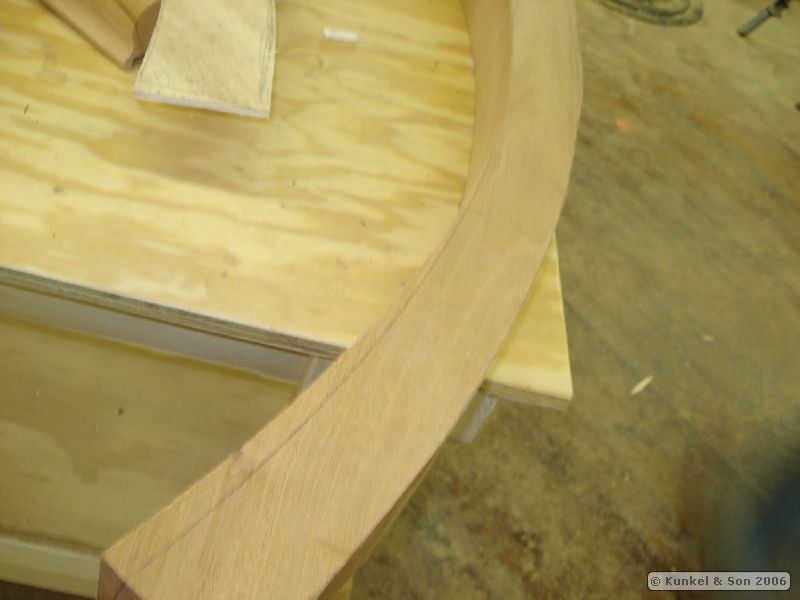
We cut to these new lines on the bandsaw. The lines cross over each other, so we have to tilt the material as it goes through the bandsaw, and stop occasionally to make sure we haven't gone too far. Once the lines meet up (normally very close to the middle of the curve), we turn it around and cut the same way from the other end. When we are done with this step, it should look like a parallelogram from the ends.
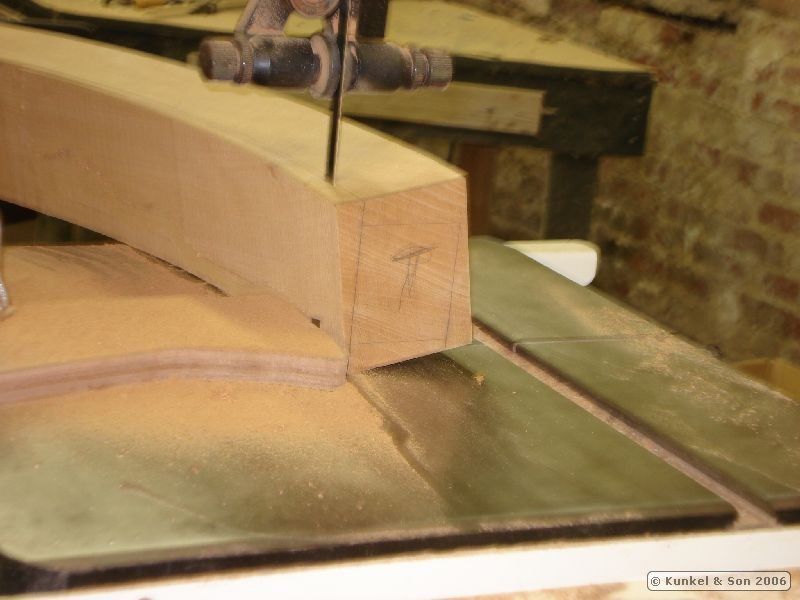
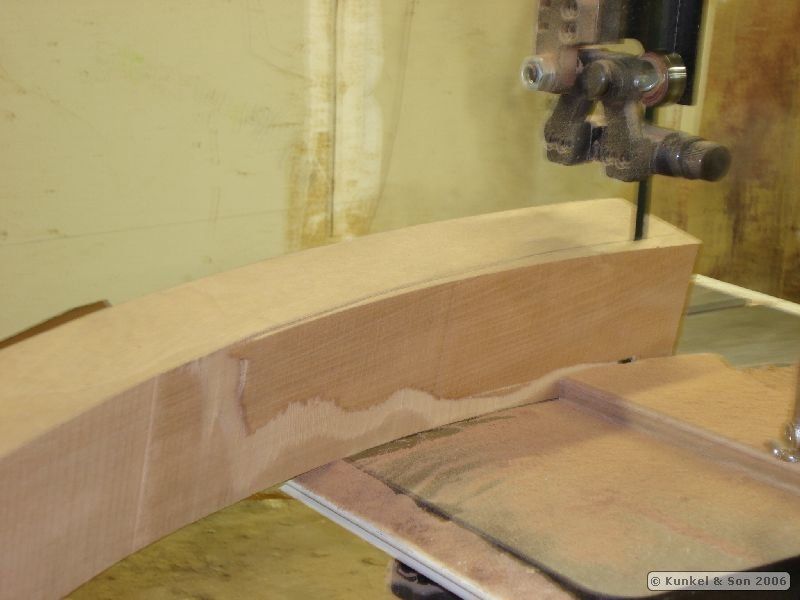
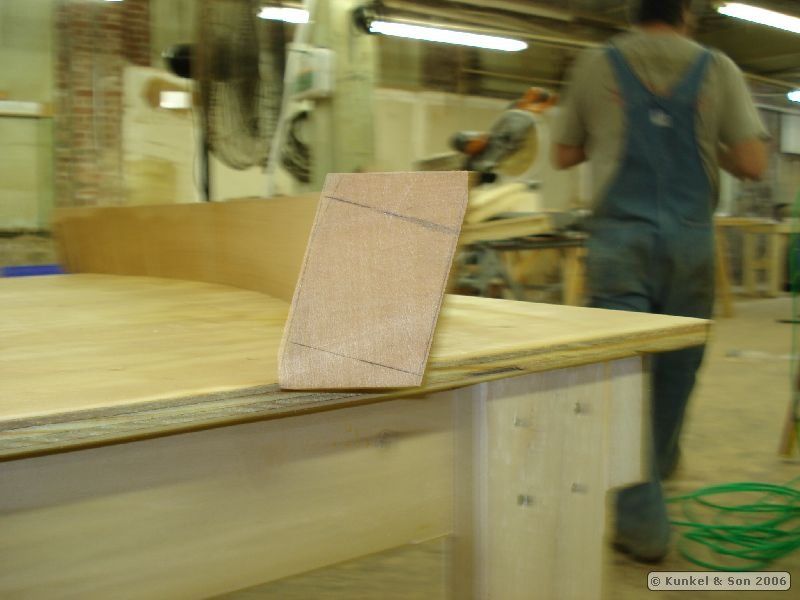
The sides of the curve are then cleaned up by hand with belt sanders and power planes. If you look at the first picture, you can see that it doesn't sit flat on the form. We then bandsaw the top and bottom in a similar fashion to the sides, and clean them up the same way. Some special care is taken to get it to fit on the form well (as you can see it does in the second picture).
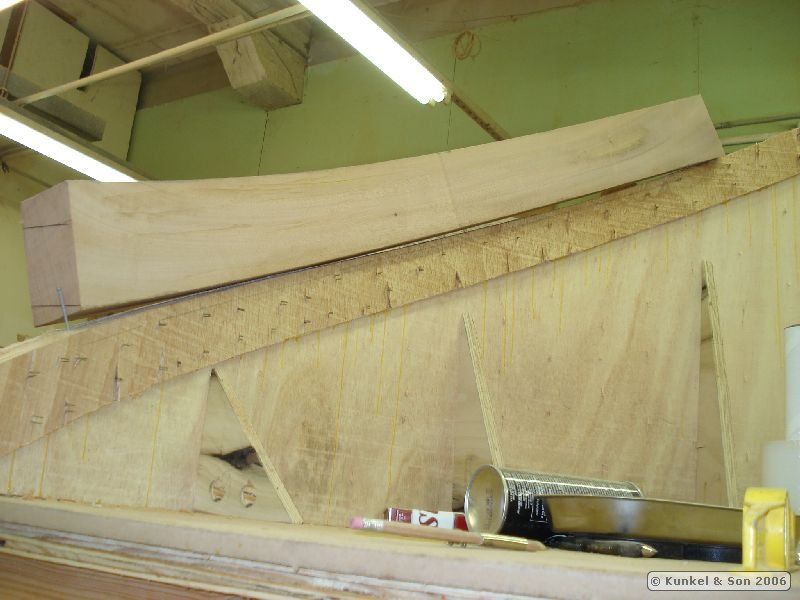
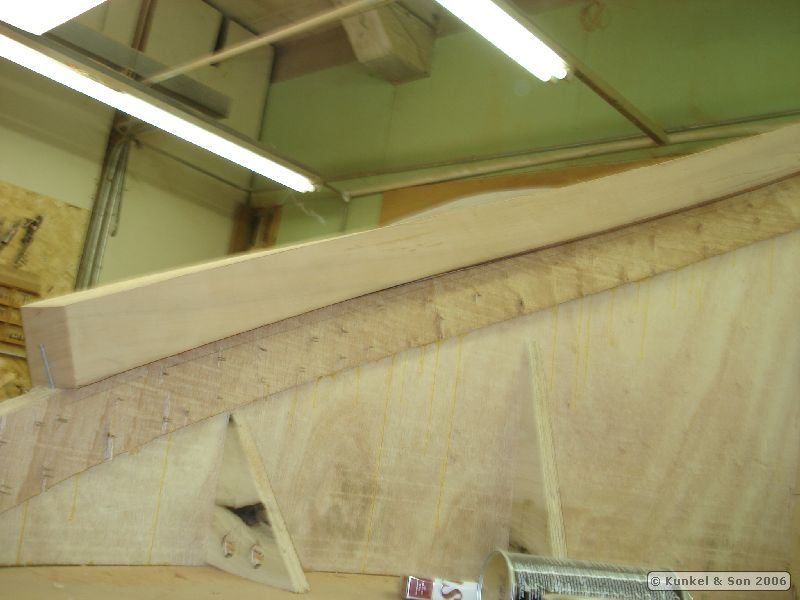
Here you see the 3 stages of the curve blanks. The rough blank is on bottom, the blank finished on the sides in the middle, and the finished blank on top. In the second picture you can see that the finished blank is not a simple curve, as it doesn't sit flat on the blank below it.
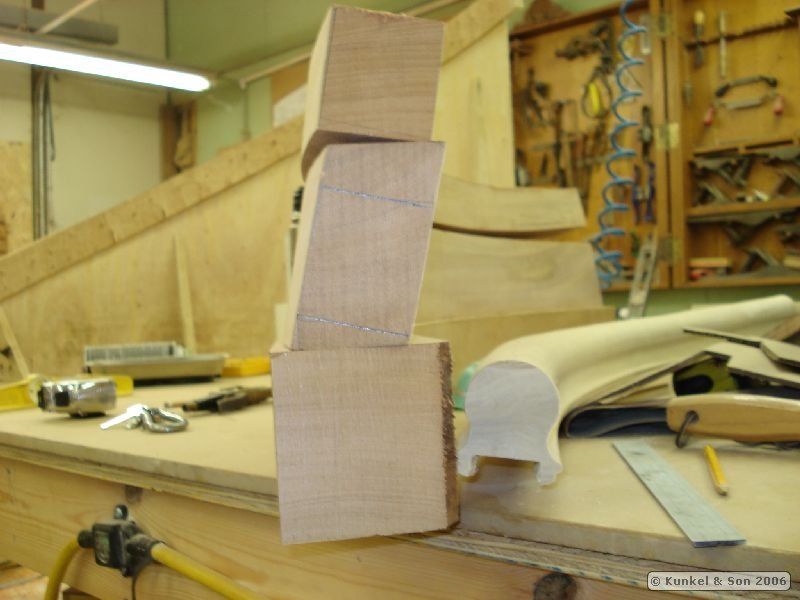
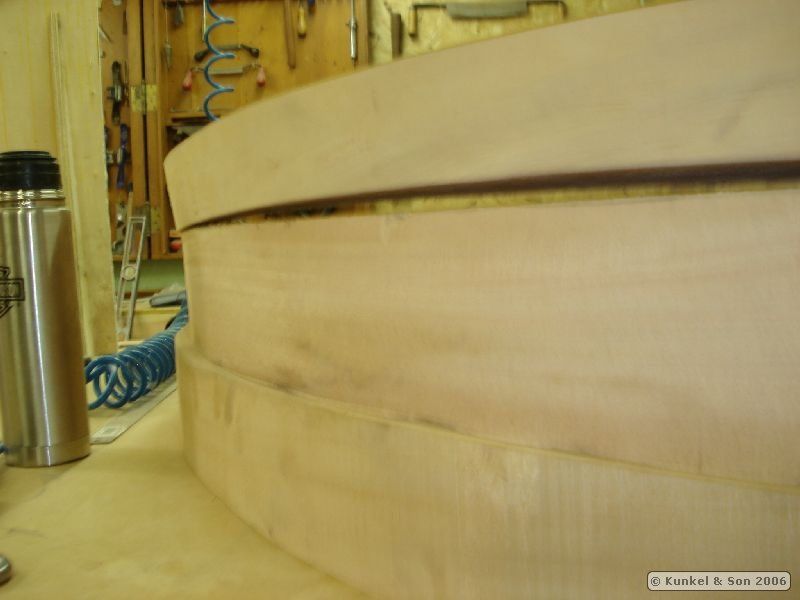
From this point, we shape the curves by hand on a router table (the pictures are from another part of the same handrail, the process is basically the same).
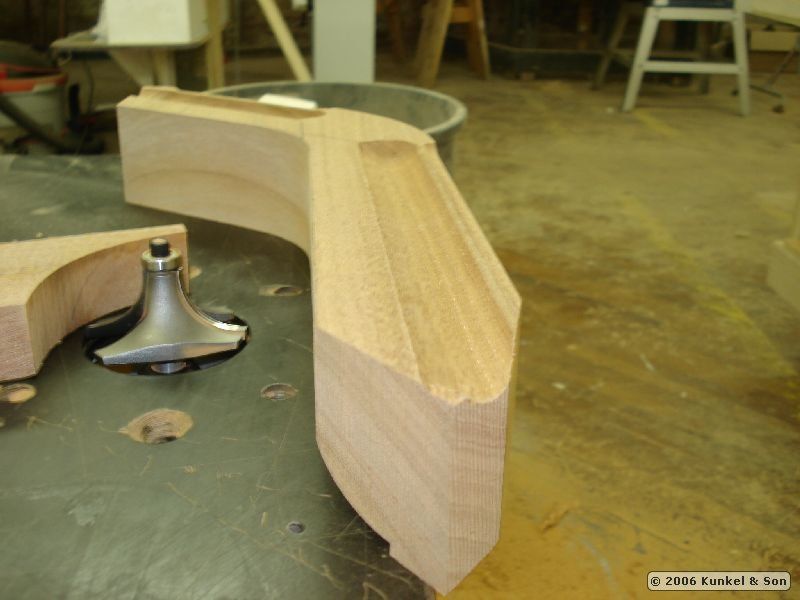
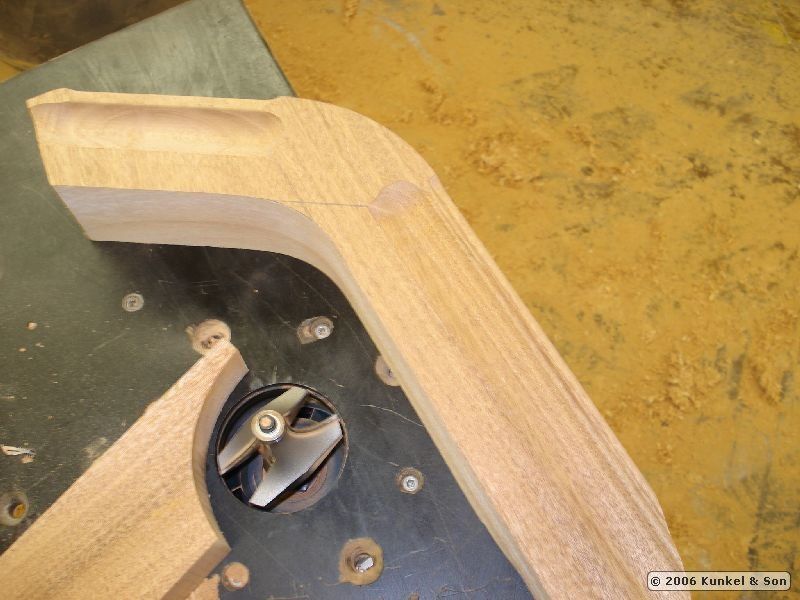
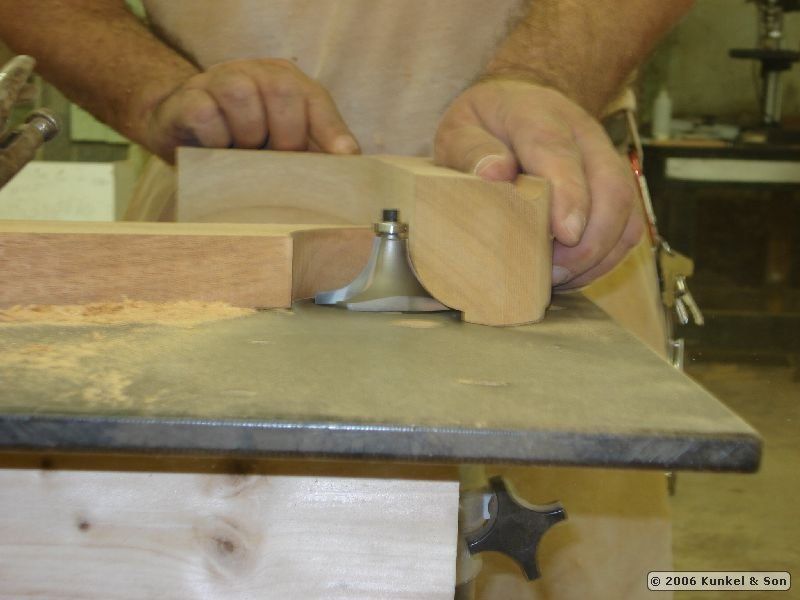
Because of having to steer the curve over the router table by hand, you end up with some inconsistancies over the length of the curve. We then take sandpaper, chisels, scrapers, spoke shaves, rasps, and die grinders, and blend the shape by hand. Each section (approximately 3 1/2 feet) of the spiral takes four to six hours before it is ready to be installed.
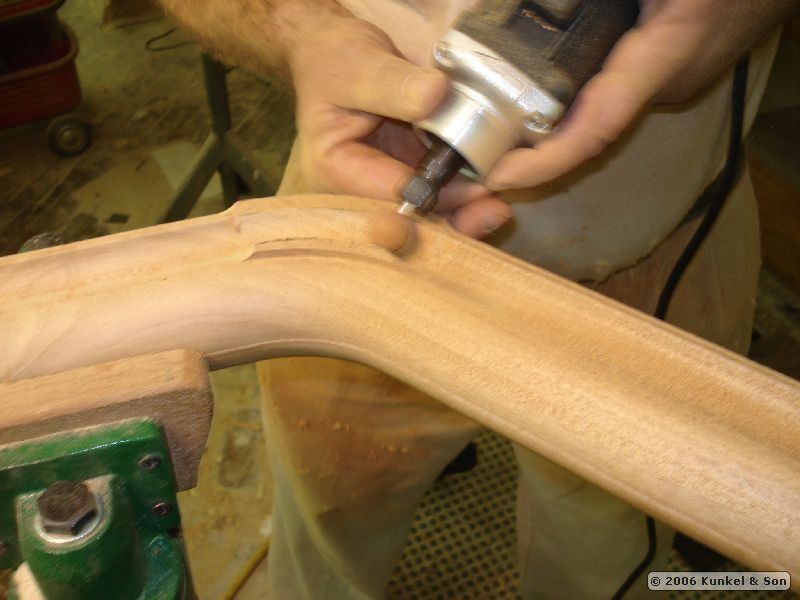
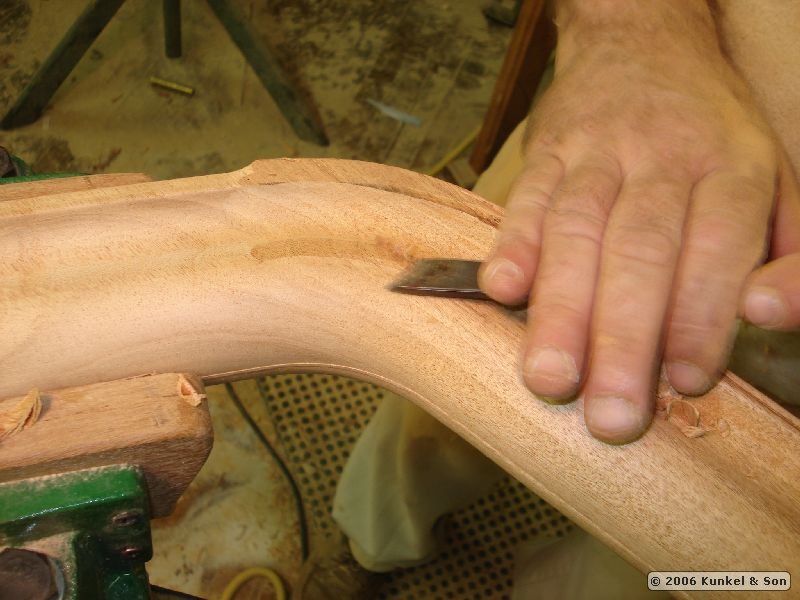
Here are some pictures of the installed handrail.
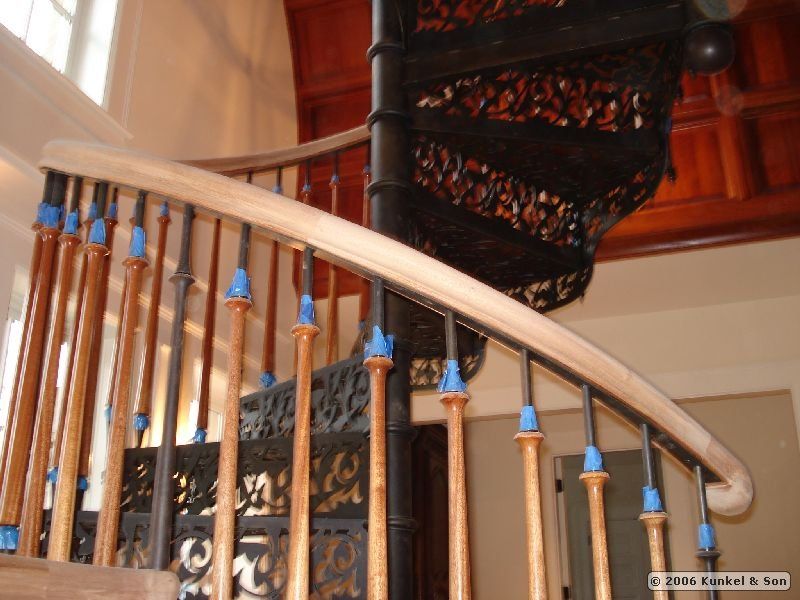
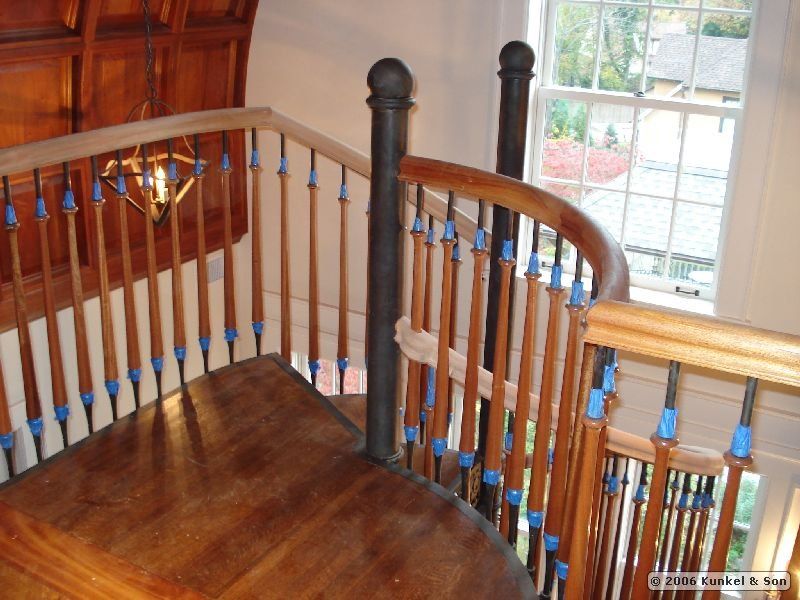
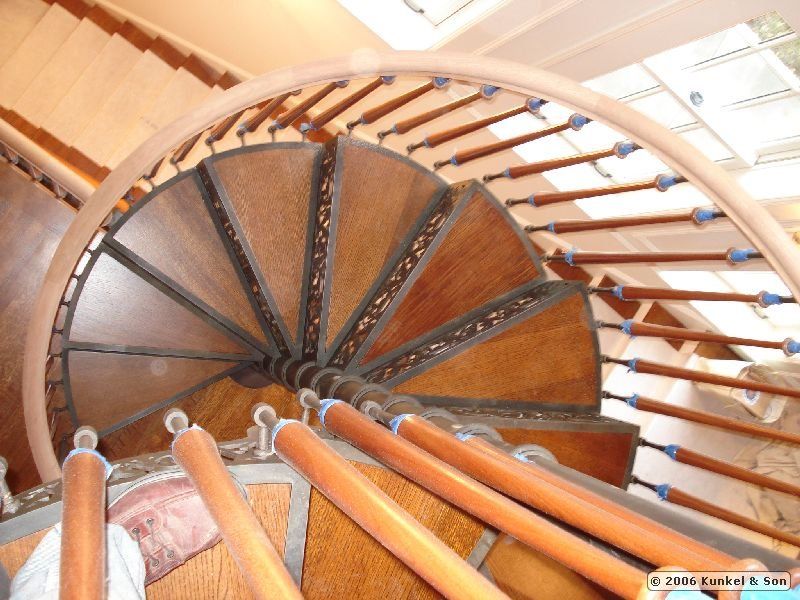
Reprinted with permission from Kunkel & Son Fine Woodworking, a company producing architectural woodwork in Nashville, TN.